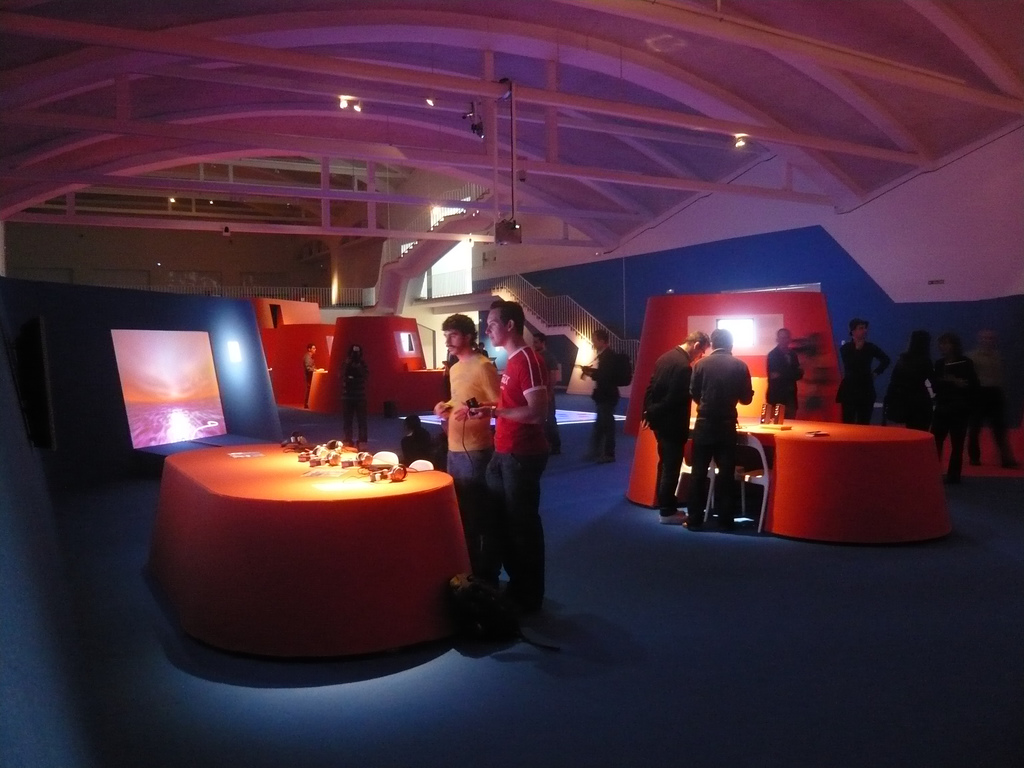
The thought of showing off your game in a crowded setting, and actually interacting with people looking to catch a glimpse of your project, can be both exciting and intimidating. This isn’t about social anxiety issues or just chatting with fellow gamers, it’s about presenting something you’ve poured all your blood, sweat, and tears into over the past few months or even years. Since each event can be your one and only chance to impress people who otherwise may not hear about your game, it’s easy to see why exhibiting can be a nerve-wracking ordeal.
But like job interviews, high school oral reports, or any event requiring public speaking, preparation and practice can make all the difference. Even though every game event and trade fair is different, which means one or more surprises can come your way, the following are a few tips that could help you put on a good showing and grow your loyal fan base in a fun and unique way.
1. Do Your Booth Cost Research
If you want to chat with gamers and promote your game to possible buyers, you’re going to need a booth. You’ll definitely want to do plenty of research and planning before investing in one simply because every event varies. While a booth at a local gaming event may cost you next to nothing, even a small 10×10 at Game Developer’s Conference (GDC) might be several hundred, or even a couple thousand, dollars.
Also worth mentioning is that you should prepare for other expenses as well, especially since every venue is different. For example, some places offer free electricity while others require that you pay to use it. You can imagine how trying to demo your game without any power will go.
2. Plan For Comfort, Food, and Water
These events tend to last all day, which means you better toss on some comfortable external foot coverings, aka, shoes. Wear something comfortable for clothes as well, but still try to look presentable (no pajamas or anything like that). And, of course, bathe.
You’ll also want to bring along plenty of water so you stay spirited. While most venues have concession stands and such to buy food, try bringing something you can whip out and eat quickly so you never have to leave your booth. It’s hard to promote your game while dehydrated and hungry, especially when either of the two make you cranky, tired, etc.
3. Bring Swag and Promotional Material
Flyers are a cheap and effective way of increasing the chance that someone who walked by your booth actually remembers that your game exists. At most events there are tons of games to check out, which is why giving passersby something physical that they can look at later, or share with others, is a very good idea. Just make sure to plan appropriately, since you don’t want to carry a heavy amount of flyers only to not even use half of them.
People also love little things like buttons, pens, fridge magnets, etc. When it comes to buttons, they aren’t too expensive and can be made to be very attractive and interesting. You can add your company logo, a main character in you game, and so on. The same goes for t-shirts, although these are much more expensive than the aforementioned freebies.
4. Avoid The Last Minute Changes
There’s nothing more devastating than fixing one small problem the night before (and test it) only to have your game crash every time someone tries to play it. If you happen to have a few small bugs in your game, don’t sweat it. It’s better that players run into these small bugs and know they’re playing an early version of your game than if they can’t play it at all due to constant crashing.
While you’re at it, make sure to note any glitches and bugs you notice while people are checking out your game. Since Wi-Fi and internet isn’t always reliable, and cell phones can run out of battery, we recommend you bring along a good old-fashioned notebook and pen. Again, it’s your call if you want to try and actually fix any bugs during the trade show and risk destabilizing your game entirely.
5. Prepare Phrases and Answers To Questions
People are much more likely to not only play your game, but also purchase it in the future, if you talk to them. This doesn’t mean reciting the same monologue to every person that walks by. Instead, come up with a few phrases you plan on saying throughout a conversation that will make them interested in playing your game. Since you’ll be meeting a ton of different types of people, pay attention to the things you say that catches their attention or turns them off.
You should also expect several common questions that include when your game will release, on which platforms it will release, how much it will cost, etc. No matter what they ask, use it as an opportunity to upsell something else about your game. If someone asks if you’re porting your iOS game to Android when you have no plans of doing so, be honest, but also mention what platform you do plan on taking your game onto next.
[su_note]Learn more about the School of Game Design at the New York Film Academy by clicking here.[/su_note]

